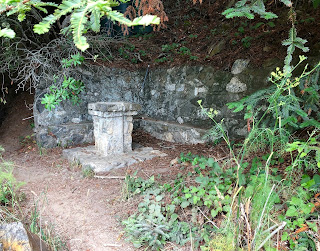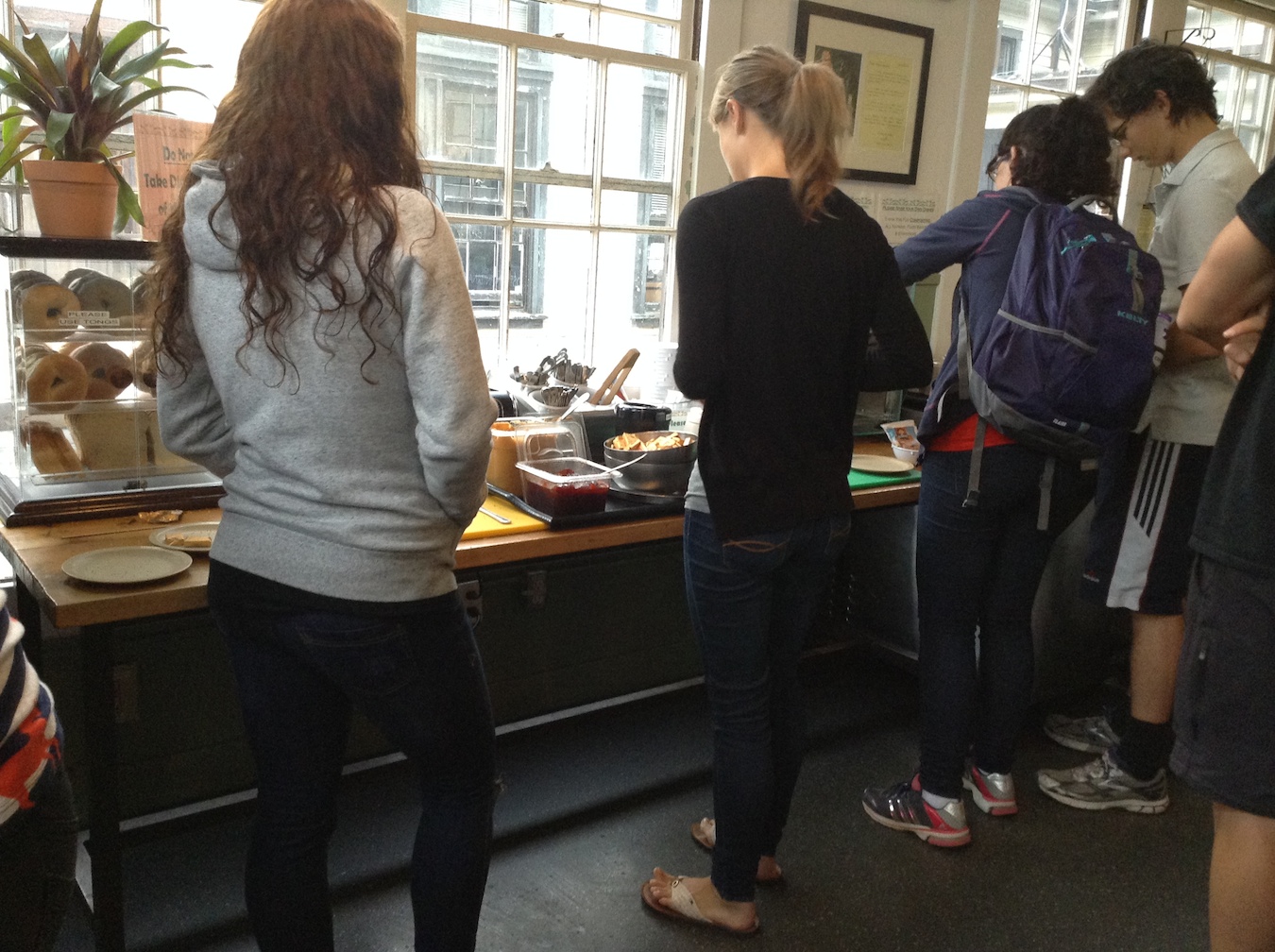Path to Big Redwood Drinking Fountain
The last time I visited Big Sur Fountains was in 2015. To my surprise they had been tidied. The weeds had been cut and rock clutter, eroding from the hills, removed. Now, six years later, I wanted to see if the fountains had survived the elements, and the last few years of landslides, two of them being severe, causing Big Sur Highway (Hwy. 1) to close for extended periods of time.
Soda Springs* - The route to the fountains was from the south. Soda Springs Fountain is a few miles north of Ragged Point. It is easy to miss as it is tucked into a moist niche surrounded by vibrant Seep Monkey Flower and lavender hued Hedge Nettle. The fountain is an excellent example of artful Conservation Corps craftsmanship. (touch photo for larger image)
Only a handful of inches off busy Hwy. 1, the Soda Springs Fountain showed little change. (A sigh of relief)
The Drinking Fountains were built between 1933 and 1937 by the Civilian Conservation Corps, during construction of the Carmel-San Simeon Hwy. A source of water was needed for thirsty motorists and their even thirstier automobiles.
Location information on the fountains may be found at http://mycoastalcalifornia.blogspot.com/2014/08/big-sur-drinking-fountains-snippet-of.html
The Big Redwood Fountain is located at the beginning of a dense stand of Redwoods. The trail to a Memorial Redwood Grove passes directly by the fountain. Big Redwood is the most hidden of the five. The yellow blooming fennel was dense.
Big Redwood showed little change. This artfully crafted fountain continues to stand the test of time.
Willow Creek/Seven Stairs Fountain* was very weedy. Tenacious Poison Oak, Morning Glory, and California Sagebrush were overtaking the stonework. Even the picnic table appeared in need of help.
But, there is joy and beauty at this neglected historic fountain. In the shadow of a giant rock, a tiny stream of spring water* trickled down a little wooden trough. Unfortunately, this makeshift trickle of water is causing the stonework to deteriorate.
This Morning drove up the coast, with friend Phoebe, for another look at WillowCreek/Seven Stairs fountain. To my delight a weed eater had been at work; the weeds were gone.
The picnic table perched on four rocks looked unstable. Upon closer examination we found it sturdy as a rock.
Lucia Fountain,* located a few miles North of the Historic Lucia Lodge,** is set back from the Highway. It is the only fountain with paved parking. Aggressive non-native plants are encroaching on to the stonework. A crumbling hillside may soon overtake the stonework to the north. The fountain is being threatened by water seeping from a makeshift water supply. The seepage has encouraged weeds to grow and stones to loosen and fall out of the fountain.
Rigdon Fountain* - The fountain was originally named, The Elmer Rigdon Memorial Fountain after State Senator Rigdon who was instrumental in securing funding for building the highway. The below photo was taken from across the highway.
It is impossible for me to write about the Big Sur Drinking Fountains without including a snipped of history. June 27, 1937 - Grand Opening of the Carmel-San Simeon Highway - Dedication Ceremony for the Elmer Rigdon Memorial Fountain and park. In the lower left hand corner of the historical photo can be seen a stone pedestal. The very same pedestal can be seen in the lower right hand corner of the above current photo.
The Park was weedy, but the stonework was in good condition. Rigdon does not get much foot traffic as it is located on a curve with the only parking across the highway. A speedy, death defying dash is needed to get to the fountain. I did it once and swore I would never do it again.
The Big Sur Fountains have survived 84 years, hopefully they will survive another 84.
*water not potable













































